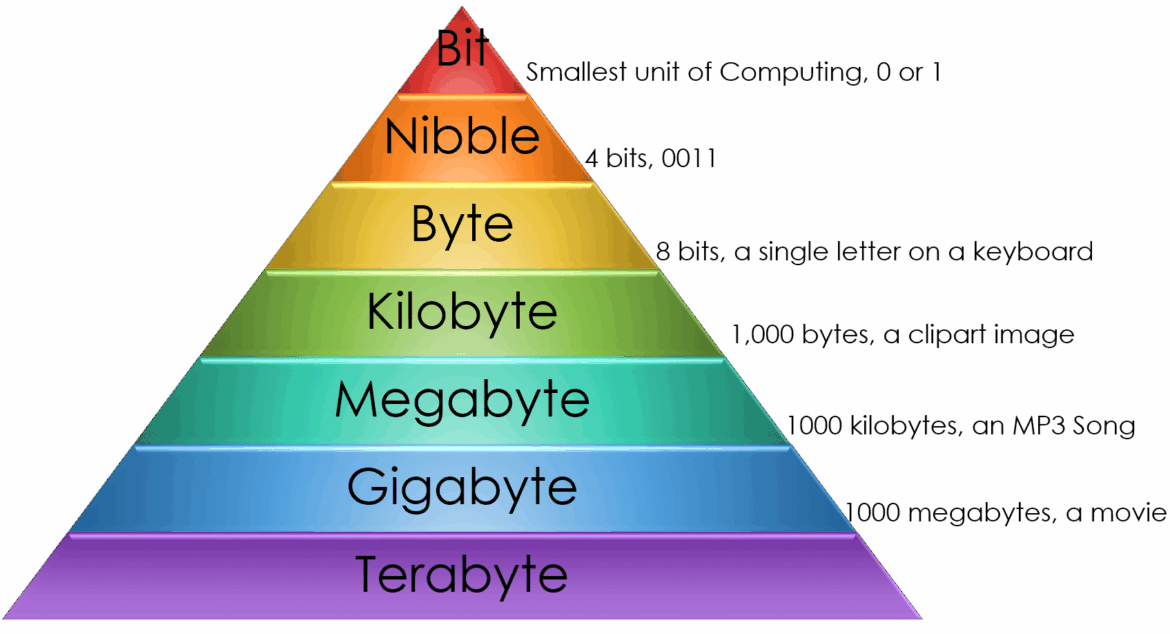1.4K
File sizes are usually expressed in units of kilobytes, megabytes or gigabytes – depending on what kind of file it is.
What are the units of file sizes? All info
When it comes to file sizes on the computer, the units are usually kilobytes, megabytes or gigabytes. Depending on the file type, you may need more storage space and possibly other storage media. The data volume of cell phone contracts is also often specified in megabytes and gigabytes.
- A bit is the smallest unit on a computer. Here it is a single digit, which can have either the value 0 or the value 1.
- One byte is a sequence of 8 bits. With this 256 different states can be stored.
- The kilobyte is actually 1024 bytes. However, hardware manufacturers often calculate with 1000 bytes when dimensioning the memory size. Short texts are often specified in kilobytes. The abbreviation is KB.
- One megabyte is 1024 kilobytes. But also here is often rounded down to 1000. Photos and longer texts are usually measured in this format. The abbreviation is MB.
- Next comes the gigabyte, which logically corresponds to 1024 megabytes. Many modern hard disks are sized in this unit, although when formatting you often find that the manufacturers calculate with 1000 megabytes and the storage space is actually less. Movies in particular are calculated in this format. The abbreviation is GB.
- For example, a DVD has just over 4 gigabytes of storage space and Blu-ray is rated at 8 gigabytes.
- The current largest unit for file sizes in home use is the terabyte. Depending on the computer, users have hard drives with one to twelve terabytes (or TB for short). As always, the conversion number to gigabytes is 1024.
Fun Facts about file sizes
A lot has happened in the last fifty years when it comes to file sizes.
- The Commodore 64 actually had a RAM of 64 kilobytes. That’s about the file size of three blank Word documents today.
- Bill Gates today denies ever saying that 640 kilobytes of memory was enough for any computer. Nevertheless this alleged quote is used with pleasure.
- Moore’s law states that every year the number of transistors would double. Later he corrected himself to two years and was also right with it for a long time. It was similar for a long time with the memory space.

